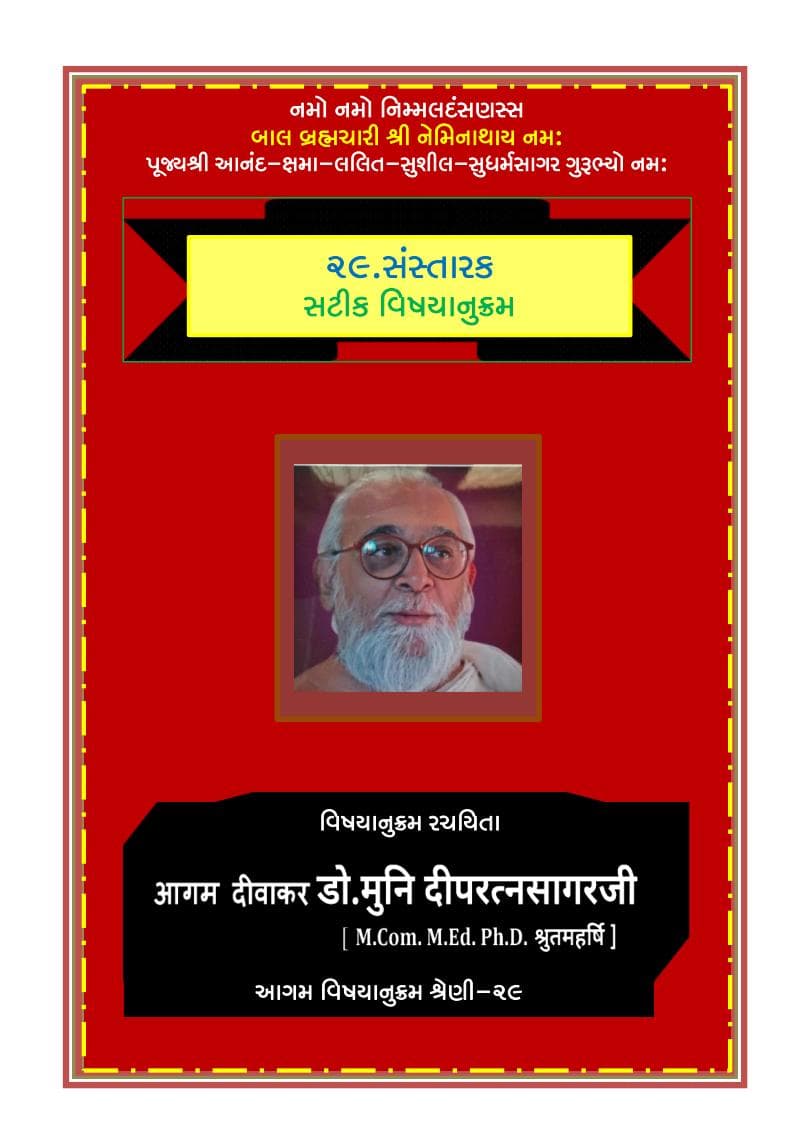29 Sanstarak Satik Vishayanukram
Added to library: September 1, 2025

Summary
Based on the provided catalog link and the nature of Jain texts, here's a comprehensive summary of "29 Sanstarak Satik Vishayanukram" by Dipratnasagar, Deepratnasagar, assuming it's a commentary or analysis related to specific Jain concepts:
Book Title: 29 Sanstarak Satik Vishayanukram Author(s): Dipratnasagar, Deepratnasagar Publisher: Dipratnasagar, Deepratnasagar
Summary:
"29 Sanstarak Satik Vishayanukram" is a work by Dipratnasagar and Deepratnasagar, published by the same authors. The title itself provides significant clues about its content. Let's break it down:
-
"29": This numerical prefix likely indicates that the book focuses on a specific set of 29 key principles, doctrines, or entities within Jainism. Jain scriptures and commentaries often enumerate important concepts in sets of numbers (e.g., the 25 Bhavanas, the 14 Gunasthanas, the 10 Dharmas). This suggests a systematic exploration of 29 specific elements.
-
"Sanstarak": This term is crucial in Jainism. It refers to the practice of Sallekhana, also known as Sanlekhana or voluntary religious fasting unto death, undertaken with equanimity and detachment. This is considered the highest form of ahimsa (non-violence) and a final spiritual discipline to shed the body at the end of one's life, free from attachment and aversion. Therefore, a significant portion of the book is likely dedicated to explaining, elucidating, and perhaps analyzing the concept of Sallekhana.
-
"Satik": This term signifies that the book is a commentary or annotated version (bhashya, tika, or vyakhya). It implies that the authors are providing an in-depth explanation, interpretation, and analysis of the "29 Sanstarak" principles. They are not merely listing them but are offering a scholarly and devotional engagement with them. This commentary would likely delve into the philosophical underpinnings, practical applications, and scriptural basis of these concepts.
-
"Vishayanukram": This translates to "Subject Index" or "Table of Contents," but in the context of a scholarly work, it suggests a structured and organized presentation of subjects. It implies that the book systematically outlines and discusses various topics related to the 29 principles. The authors have likely structured the work logically, making it easy for readers to understand and navigate the complex subject matter.
Overall, "29 Sanstarak Satik Vishayanukram" is a deeply insightful and scholarly Jain text that offers a detailed commentary on a specific set of 29 key principles or doctrines within Jainism. A significant focus of this commentary is likely on the profound spiritual practice of Sallekhana. The authors, Dipratnasagar and Deepratnasagar, present their analysis in a structured and organized manner, providing an in-depth exploration of these important aspects of Jain philosophy and practice.
The book is intended for private and personal use and is a valuable resource for those seeking to understand the intricacies of Jainism, particularly the principles related to spiritual discipline and the ultimate liberation.